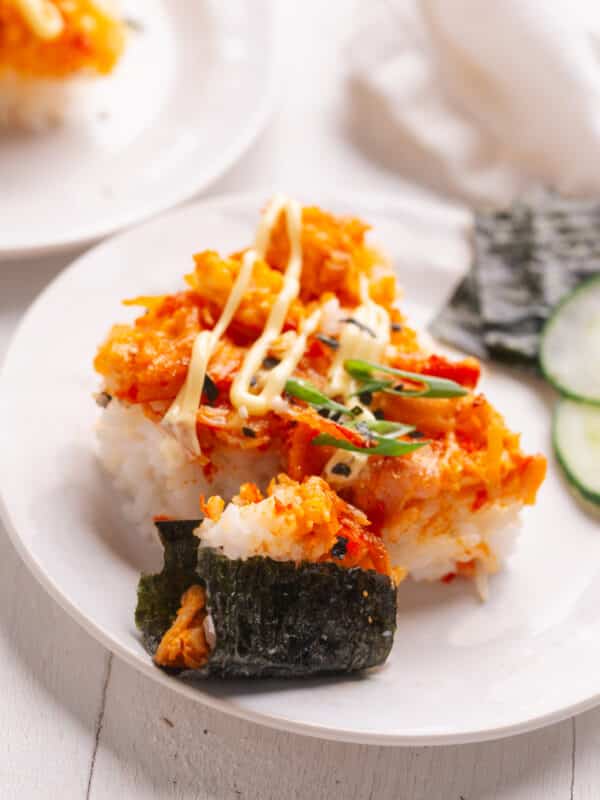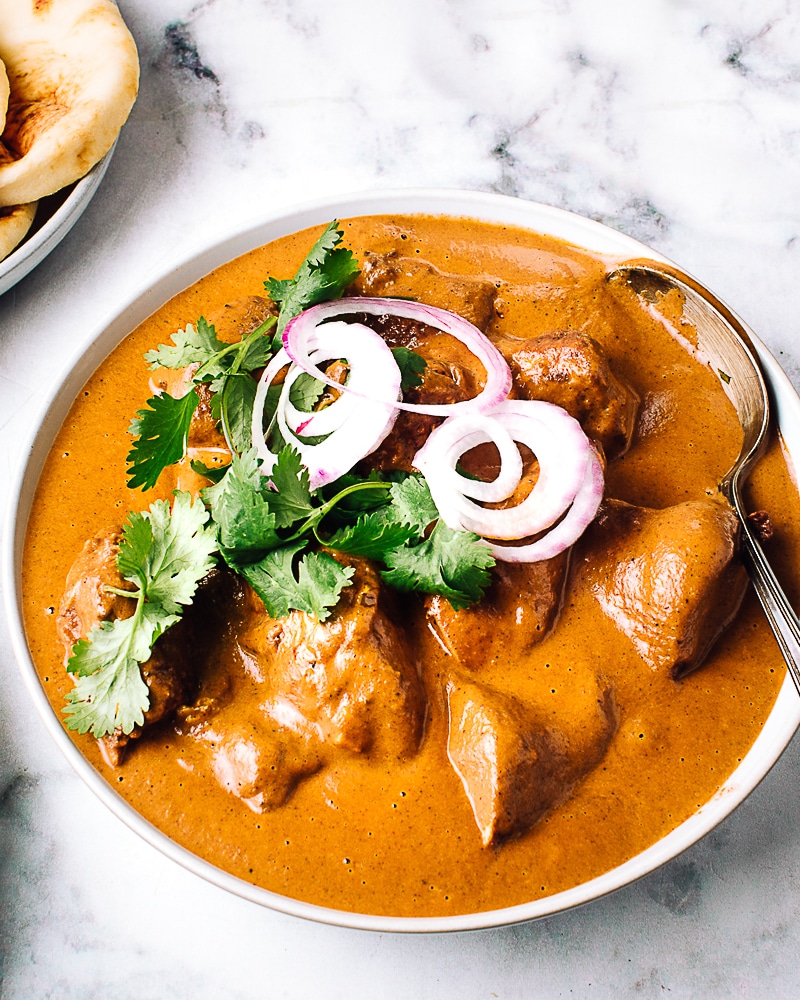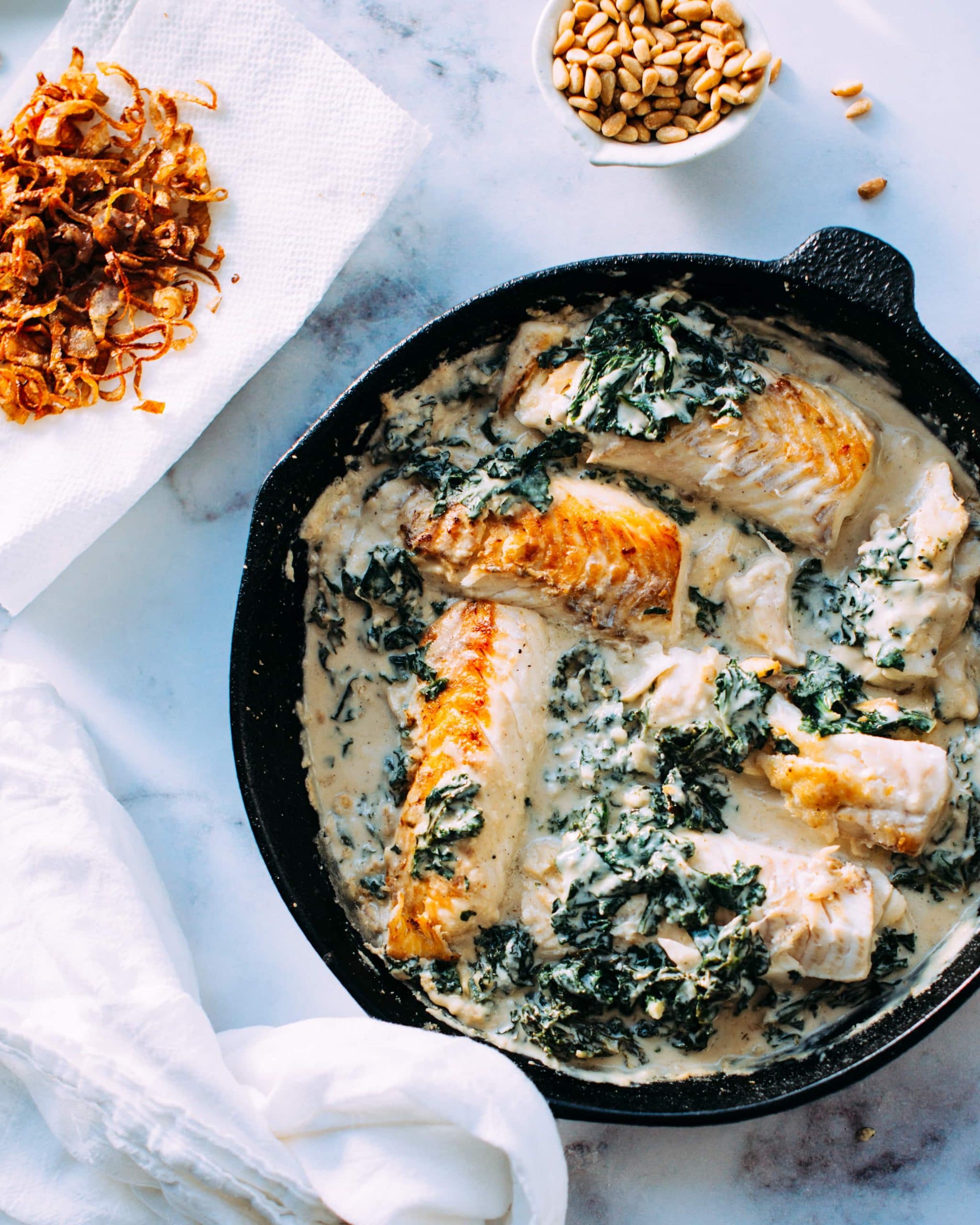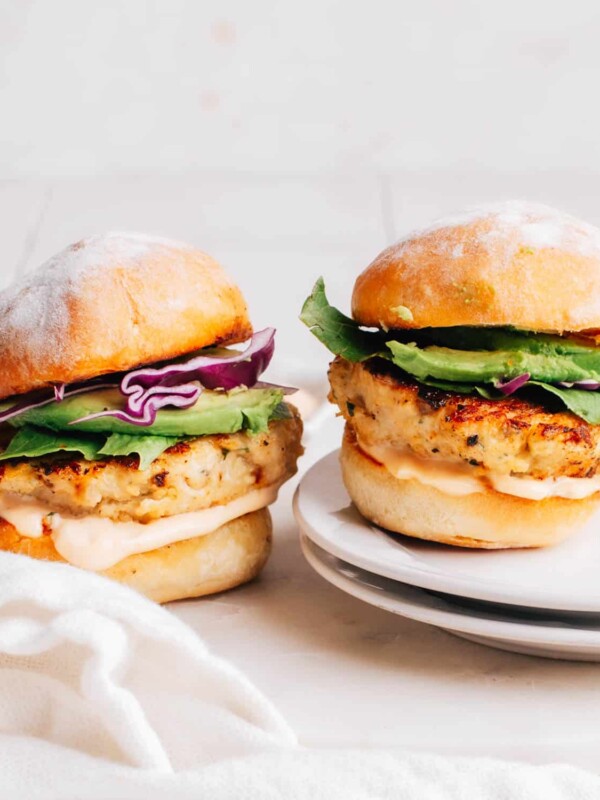A basic guide for how to make pasta from scratch. This homemade pasta recipe is so easy and delicious, perfect for all your favorite sauces.
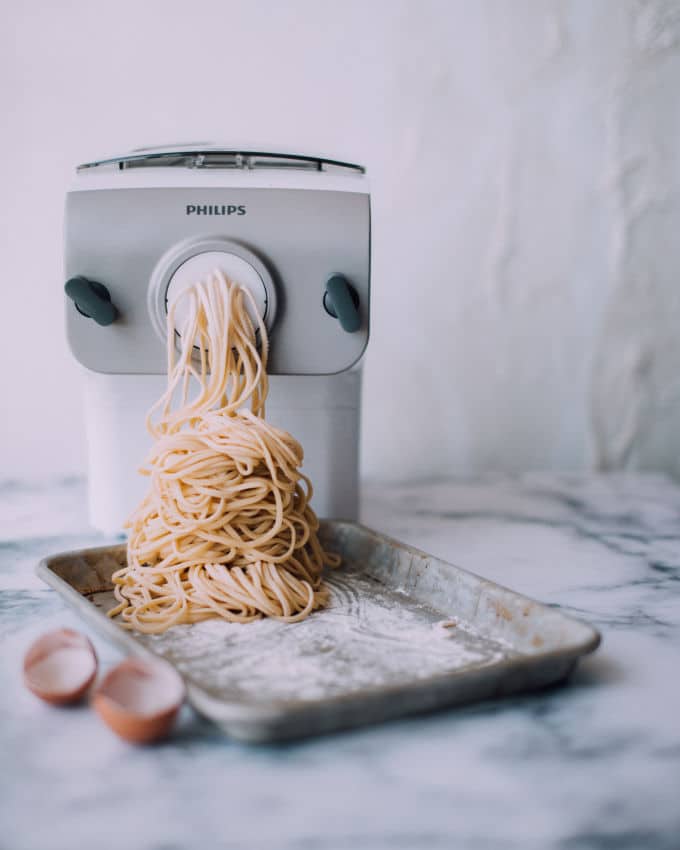
There is something hugely satisfying about making fresh pasta. Not only is its taste and texture incomparable to anything you get dried, it is very easy to do, and it is fun!
It is a great idea for a dinner party – just knead up some dough, and let everyone roll it out and make the shapes they like.
You could choose to prepare several fillings (my good friend Marnie makes sweet onion with ricotta, wild mushroom with mozzarella, and squash with marscapone) and do a ravioli making demonstration. Let everyone make what they want while they mingle, just keep a pot of water boiling on the stove, and a simple marinara sauce bubbling next to it.
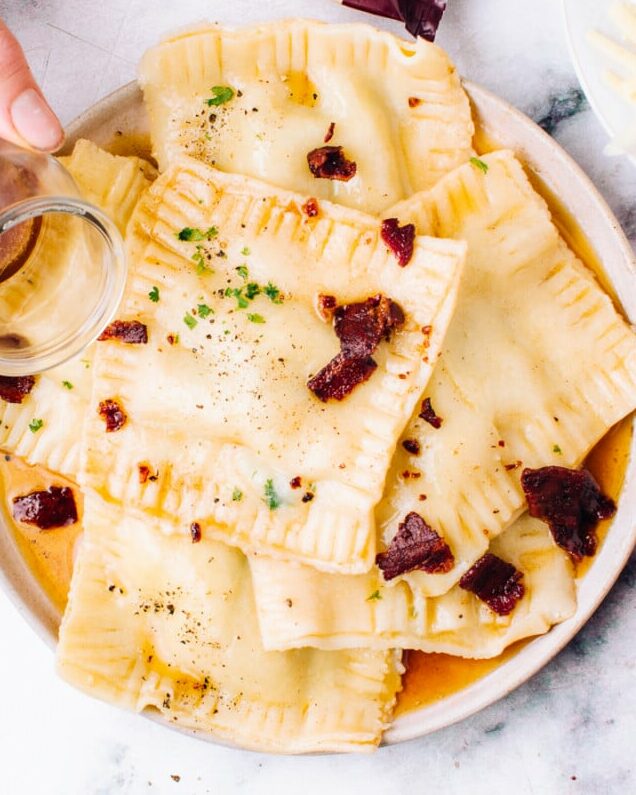
How to Make Pasta From Scratch
If you have never made homemade pasta, you might not believe me when I tell you how straightforward and quick it really is. Just a pile of flour on a clean counter with a few eggs cracked into it. (That’s it, that’s the whole recipe). The kneading is the hardest part – because it is such a stiff dough, you’ll have to put your back into it. (I broke a sweat – does that count as a workout?).
After ten minutes of grunting and puffing and knocking the dough around the counter, you’ll need to let it rest for about 30 minutes. This relaxes the gluten, so it will roll out without springing back on itself – you may need the rest, too, if you haven’t been toning those kneading muscles.
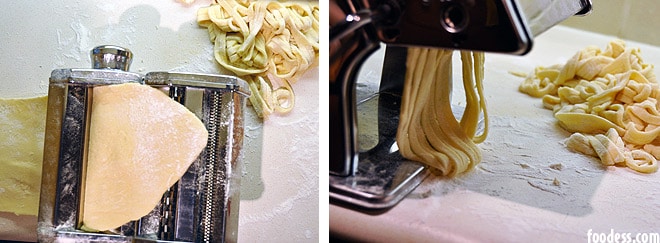
To roll out the pasta, I recommend using a clamp-on roller that you crank by hand.
With this manual roller, you start by passing a flattened lump of dough through the rollers, using the widest setting. You then change the setting to move the rollers slightly closer together, and crank the dough through again. The pasta gets thinner and longer with each pass through the machine, as you reduce the space between the rollers each time until you get the desired thickness. At this point, you can pass it through the pasta-cutting attachment to make fettuccine or linguine, or else cut it out by hand into desired shapes.
A pasta machine is a bit more expensive but a totally worthwhile addition to your kitchen paraphernalia, if you have storage space.
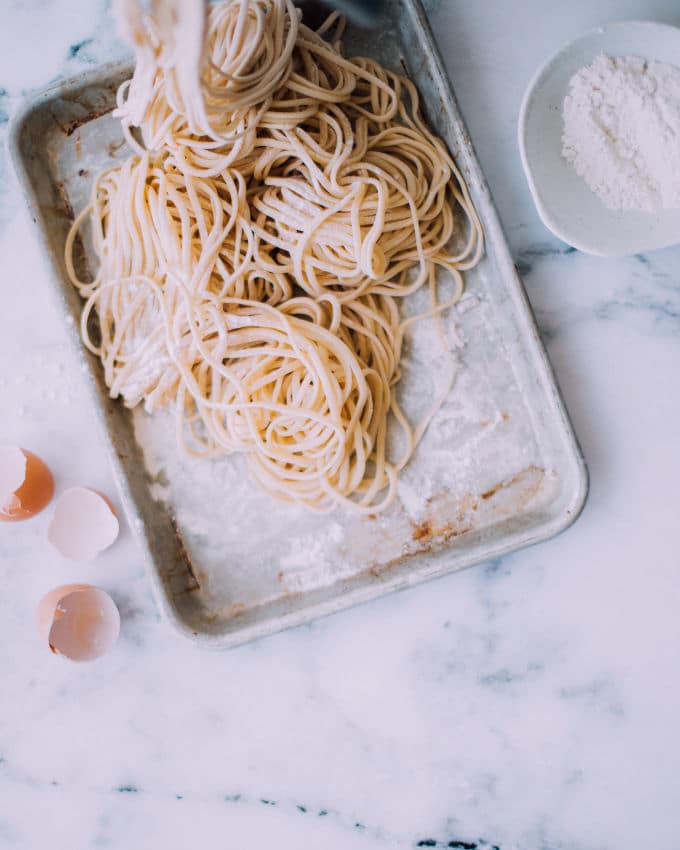
It is possible to roll it out by hand, but with such a stiff dough, I can’t imagine being able to get it very thin (I suppose I would have to bulk up my rolling muscles, first).
Really – once you have succeeded in making your own fresh pasta, you’ll be scratching your noodle (haha – I’m so pun-ny!) wondering why you never tried it sooner.
Next reading: Pasta vs Noodles (Substitution Tips + Crucial Differences)
Favorite Pasta Recipes
- How Long to Cook Fresh Ravioli
- Lobster Ravioli Sauce
- Seafood Pasta with Cream Sauce
- Beet Pasta Sauce
- The Best Meat Sauce
- Asiago Tortelloni Alfredo with Grilled Chicken
- Mushroom Pappardelle
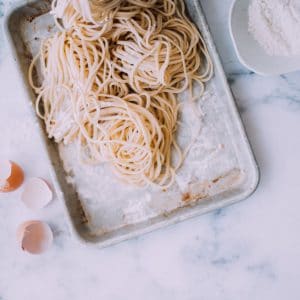
How to Make Pasta From Scratch (2-Ingredient, Easy Recipe)
Ingredients
- 3 ½ cups all-purpose flour
- 5 large eggs
Instructions
- Pour flour onto a clean counter, shape into a mound, and make a well in the center.
- Crack the eggs into the well, and beat lightly with a fork, drawing in some flour as you go, until the eggs are mixed and slightly thickened. Use your hands to blend into a smooth dough. If it feels crumbly, add water as needed.
- Knead the dough until satiny and very elastic, about ten minutes. Cover and let rest for 30 minutes before rolling it out.
- Set pasta machine's rollers to the widest setting. Pinch off a piece of dough, lightly flour it, and pass it through the rollers several times, folding it over on itself each time and dusting with flour as needed to prevent sticking.
- Set the rollers one notch closer and repeat the process two to three times, until the dough goes from lumpy and/or holey to smooth and satiny.
- Continue to notch the rollers closer together and roll the pasta to desired thickness, 1/32 inch for ribbon pastas such as fettuccine, and paper-thin for filled shapes.
Notes
Nutrition
Nutrition information is automatically calculated, so should only be used as an approximation.
